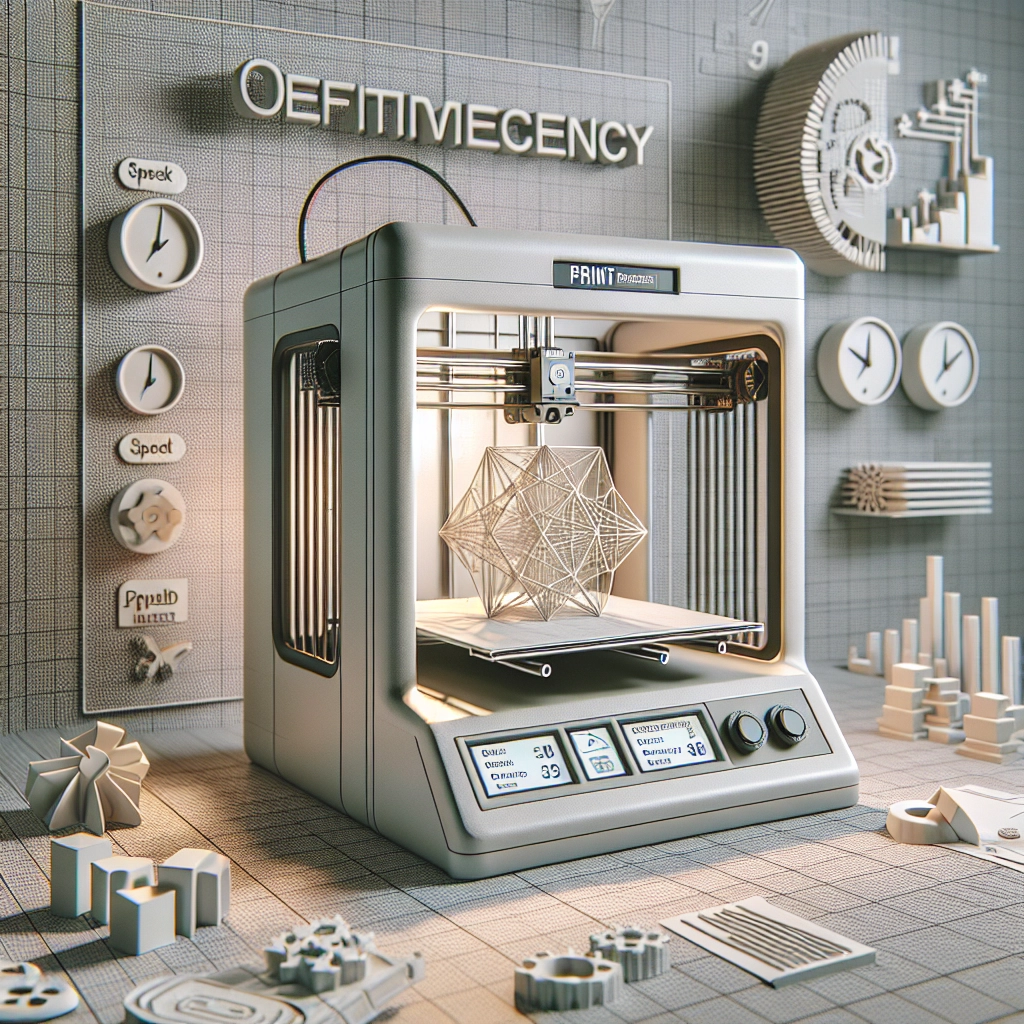Maximizing Your 3D Printing Efficiency: Speed vs. Quality
3D printing has rapidly transformed from a niche technology into a staple of innovation across industries like manufacturing, healthcare, and even fashion. If you’re a hobbyist or a professional in the field, you’ve probably faced one of the most common dilemmas in 3D printing: balancing speed and quality. Should you sacrifice detail for a quicker turnaround? Or is it worth waiting a bit longer for that perfect finish? Let’s dive into the trade-offs and strategies for maximizing your 3D printing efficiency while still maintaining the quality that makes your projects shine.
Understanding the Trade-Off
3D printing takes time. Depending on the complexity and size of your model, a single print can take anywhere from a few hours to several days. In this time, factors like layer height, infill density, and printer speed come into play. When optimizing for speed, you might lower the layer height or increase the print speed, but this can lead to rougher finishes and less detail. On the other hand, prioritizing quality could mean slower print speeds or more intricate setup processes, increasing your turnaround time.
Finding the right balance requires understanding how these settings work together. Lowering your layer height improves detail but requires more time; increasing the print speed can create a rough texture but reduces the total print duration. Knowing your goals is key—do you need a functional prototype, or is this a one-of-a-kind artistic piece?
Crafting the Perfect Print Profile
Every 3D print job is different, and adjusting your printer settings for each project can help you find that just-right balance between speed and quality. Here are some tips to fine-tune your print profile:
-
Layer Height: Consider using a medium layer height (around 0.2mm) for most prints. This height often provides a good balance of speed and quality. For intricate details, though, don’t hesitate to step down to 0.1mm or lower.
-
Print Speed: While it’s tempting to crank the speed up to get quicker results, don’t overdo it. A speed of around 50-60 mm/s is often a safe starting point for standard prints. Evaluate the output: if it’s messy, retry at a slower speed.
-
Infill Density: For parts that need strength but aren’t under a lot of stress, a 20-30% infill can suffice. Higher infills increase print time dramatically and may not be necessary unless you need extra resilience.
-
Cooling: Ensure you’re using the right cooling settings. Adequate cooling can significantly improve print quality without a massive increase in time. Consider enabling a cooling fan, especially for intricate parts.
-
Multiple Parts: If you have multiple items to print, consider printing them together. This can save time and reduce the overall print duration since your printer can work without changing setups multiple times.
Post-Processing Techniques
Sometimes achieving the best of both worlds might just involve a little post-processing magic! Methods like sanding, painting, or applying a clear coat can help enhance the aesthetic and tactile quality of your prints. Even a little filing can significantly improve the smoothness of a surface, allowing you to print at a slightly quicker pace without compromising the final look.
Calibration is Key
Another surefire way to maximize efficiency is regular printer maintenance and calibration. A well-calibrated printer will perform better, resulting in fewer failed prints, which means faster project completions overall. Invest some time into leveling the print bed and cleaning the nozzles—consider it your printer’s routine check-up.
Know Your Material
Different materials have different characteristics that can affect both speed and quality. For example, PLA is beginner-friendly, prints quickly, and looks fantastic, whereas ABS might require more time and a heated bed for optimal results. Understanding how each material interacts with your printer can offer insights into how to best set your speed and quality parameters.
Balancing speed and quality in 3D printing doesn’t have to feel like an uphill battle. By getting to know your printer, experimenting with settings, and fine-tuning your approach, you can produce amazing prints without sacrificing too much time. The best project is one that balances your needs perfectly—quick enough for your timeline but detailed enough to impress. As you dive deeper into your 3D printing journey, you’ll find that mastering this balance could lead to not only greater efficiency but also a greater sense of satisfaction in the work you produce. Happy printing!

